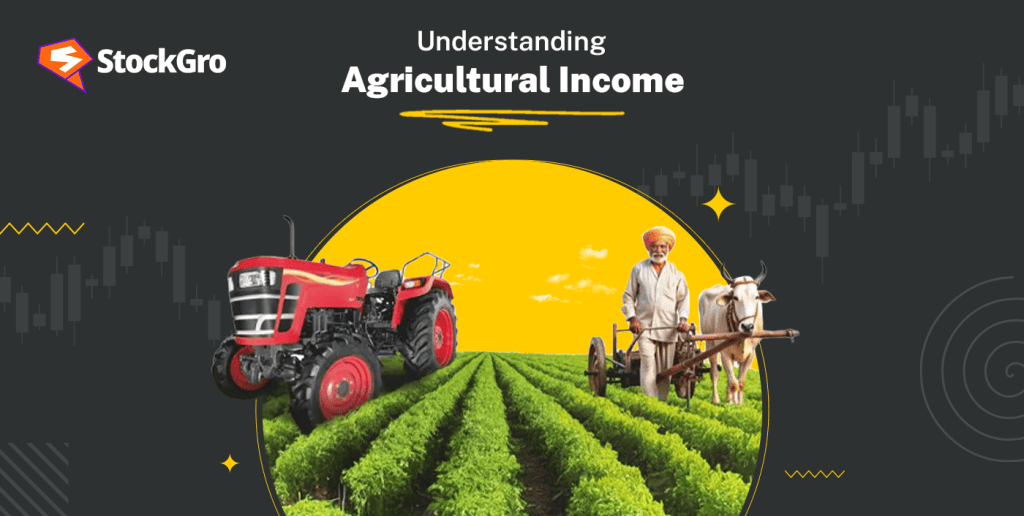
With almost half of the population working in agriculture and a significant contribution to rural livelihoods, it has always been the pillar of India’s economy. Plus, about 55% of India’s population depends mainly on the agricultural sector for their means of survival (Source: IBEF).
Understanding its importance, the Indian Constitution releases agricultural income from central taxation under the Income Tax Act of 1961, thus relieving farmers, especially the small-scale ones, of the financial burden.
Not all earnings linked to agriculture, though, fit as agricultural income. The type of income affects the tax treatment, thus guaranteeing fair and transparent classification of the income.
This article seeks to demystify the idea of agricultural income, investigate its several forms, and clarify its tax consequences and agricultural exemptions under Indian tax laws.
Also read: The past, present, and future of the Indian agriculture industry
What is agricultural income?
Agricultural income is defined as the earnings generated from property in India that is utilised for agricultural purposes, as per Section 2(1A) of the Income Tax Act of 1961. This covers a range of tasks, including farming, gathering, and selling agricultural output in the market. Income derived from leasing or renting agricultural land and simple produce processing falls under this category as well since it maintains agricultural character.
To qualify as agricultural income, particular requirements have to be satisfied:
- Primary agricultural activities: The income comes directly from farming activities, including ploughing, sowing, watering, and crop harvesting.
- Land usage: Whether from farming or rent, the income has to be connected to the land; under pertinent state laws, this is agricultural land.
- Location: The land must be situated within India.
Income specifically not considered agricultural income
- Earnings from poultry farming operations.
- Revenue from beekeeping activities.
- Dividends distributed by a company from its agricultural earnings.
- Proceeds from selling naturally grown trees.
- Income derived from dairy farming.
- Profits from salt harvested after sea water floods the land.
- Payments for the purchase of standing crops.
- Royalties obtained from mining activities.
- Revenue generated from producing butter or cheese.
- Fees received for using farmhouses as filming locations for TV shows or movies.
Types of agricultural income
Agricultural income in India is diverse, encompassing various sources linked to farming and land use. Below are the main categories:
- Rent or revenue from land: Agricultural income includes any rental or lease income generated from land that is utilised for agricultural purposes. The land should be located in India and is primarily utilised for agricultural purposes. This land’s income is free from taxes provided it is used explicitly for farming purposes and might be liable for local rates set by the government.
Among the options following, at least one must be fulfilled:
- The land is subject to land revenue assessment or a local tax collected by government authorities or
- If the first condition is not applicable, the land must not be located within certain specified areas.
| Population Range | Aerial Distance from Municipality |
| More than 10,000 but not more than 1 lakh | Not exceeding two kilometers |
| In excess of 1 lakh but not exceeding 10 lakh | A distance of no more than six kilometers |
| In excess of 10 lakh | A distance of no more than eight kilometers |
Source: Income Tax India
- Income from agricultural operations: Agricultural income is that obtained from the real farming of crops. This covers selling fruits, vegetables, crops, or any other produce grown on the ground.
- Income from sale of agricultural produce: Income generated from activities like cleaning, husking, or ginning, which get the produce ready for market, qualifies as agricultural income, as the process keeps the agricultural character of the product.
- Income from agricultural buildings: As long as the building is required for farming operations, income from buildings on agricultural land used for agricultural purposes (e.g., storing produce or housing workers) is agricultural income.
- Income from sale of nursery produce: Agricultural income includes earnings from the sales of nursery plants, seedlings, or saplings.
Understanding these kinds of issues helps taxpayers to better classify their earnings under agricultural income for tax compliance.
Tax implications of agricultural income
Agricultural income is typically exempt from income tax under the Income Tax Act of 1961. The Act does, however, contain clauses allowing agricultural income to be indirectly taxed via a mechanism sometimes known as partial integration of agricultural income with non-agricultural income. This strategy seeks to impose higher tax rates on non-agricultural income upon specific criteria being satisfied.
Applicability of partial integration
The partial integration method is applicable to a variety of entities, such as individuals, associations of persons (AOPs), Hindu undivided families (HUFs), artificial juridical entities, and bodies of individuals (BOIs), provided that specific conditions are satisfied:
- In a financial year, net agricultural income comes out above ₹5,000.
- The fundamental exemption limit, which is contingent upon age and tax system, is exceeded by non-agricultural income. Particularly:
- Under the old tax regime, the exemption limit is:
- ₹2.5 lakh for individuals under the age of 60.
- ₹3 lakh for individuals aged 60 to 80.
- ₹5 lakh for individuals over the age of 80.
- Independent of age, the exemption limit under the new tax system is ₹3 lakh.
Consequently, tax is paid on non-agricultural income only when it surpasses the exemption level; relief on agricultural income is then applied to lower the general tax load.
You may also like: Old vs. New – Which Income Tax Regime is Better For FY 2023-24?
Tax calculation and relief: Step-by-step approach
Step 1: Calculate total tax liability
Determine the tax liability by utilising the total income, which includes:
- Net agricultural income.
- Non-agricultural income.
Step 2: Determine the agricultural income tax.
- The sum of net agricultural income and the maximum exemption limit applicable to the taxpayer’s tax slab.
Step 3: Determine the exact tax amount
Take the tax liability calculated in Step 1 and subtract the tax liability from Step 2. Subsequently, implement the required modifications for:
- Any applicable tax rebate.
- Surcharges, if any.
- Health and Education Cess (4% of the tax liability).
This step-by-step method ensures clarity in computing tax liabilities while considering the partial integration of agricultural and non-agricultural income.
Filing requirements
Reports of agricultural income should be made on the Income Tax Return (ITR) under the designated specific section. ITR-1 applies if agricultural income is ₹5,000 or less. ITR-2 must be filed, though, if it rises above ₹5,000.
Must read: What is ITR? How to file ITR Declaration?
Tax relief under section 54B
Section 54B offers taxpayers selling agricultural land capital gains relief as well as using the sale proceeds to purchase new agricultural land. To claim this benefit:
- Before its sale, the agricultural land had to have been utilised for farming for at least two years.
- Two years after the sale, the earnings have to be reinvested in another piece of agricultural land.
Only the least amount of the following options is eligible for the exemption:
- The profits gained from selling agricultural land, or
- The sum that was reinvested in the acquisition of new agricultural land.
If the proceeds are deposited in the Capital Gains Deposit Account Scheme, this relief may also be claimed.
Bottomline
India’s economy depends on agricultural income a lot. Thus, farmers benefit when taxes on it are waived. While generally tax-free, the integration with non-agricultural income ensures fairness in taxation. Understanding these provisions and available reliefs, such as Section 54B, helps taxpayers comply with regulations and make informed financial decisions.
FAQs
What is the income tax form for agriculture?
Taxpayers reporting agricultural income should use the suitable Income Tax Return (ITR) form. Should the agricultural income be less than ₹5,000, ITR-1 should be filed. If the agricultural income, however, is more than ₹5,000, taxpayers have to apply ITR-2. These forms guarantee correct tax-related classification and reporting of agricultural income, so preserving compliance with the Income-tax Act, 1961.
What is income chargeable under rule 7?
Income chargeable under Rule 7 of the Income-tax Rules, 1962, relates to income partly agricultural and partly from business. This guideline holds true when a company uses agricultural output as raw material. There are two divisions to the income: taxable business income and agricultural income, free from taxes. For this computation, one considers the market value of the agricultural output.
What is the difference between agricultural income and partly agricultural income?
Agricultural income includes sales of agricultural produce, rent from agricultural land, and earnings from farming operations; it is totally free from tax. Nonetheless, partly agricultural income comes from activities like processing agricultural products that are both business and agricultural at different levels. The business component is taxable; the agricultural component is tax-exempt. The Income-tax Rules, 1962, Rule 7 controls the taxation of partly agricultural income.
Is sale of agricultural land taxable?
If agricultural land is located in a rural area, sales of it usually are not taxable. It might be liable to capital gains tax, though, if the agricultural land falls inside designated urban limits. The site and classification of the land as per the Income-tax Act, 1961 determines the taxability. Determining the tax consequences depends on correct documentation and respect of tax laws.
Which list is agricultural income?
Entering Entry 46 in the State List of the Seventh Schedule of the Indian Constitution, agricultural income Subject to the Income Tax Act, 1961, this entry grants states the power to tax agricultural income. The central government is not permitted, however, to tax agricultural income directly, so ensuring that states have jurisdiction to control and impose taxes on such income within their particular territories.

